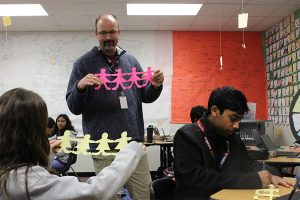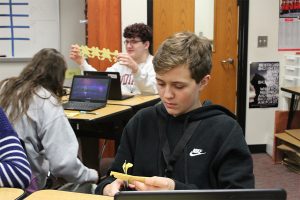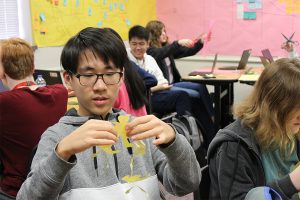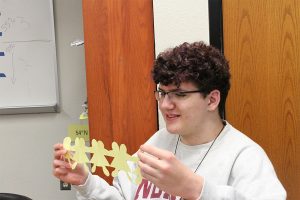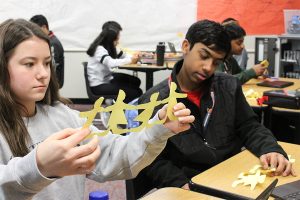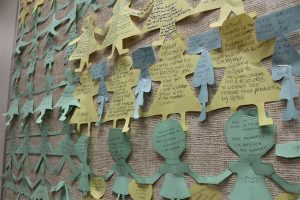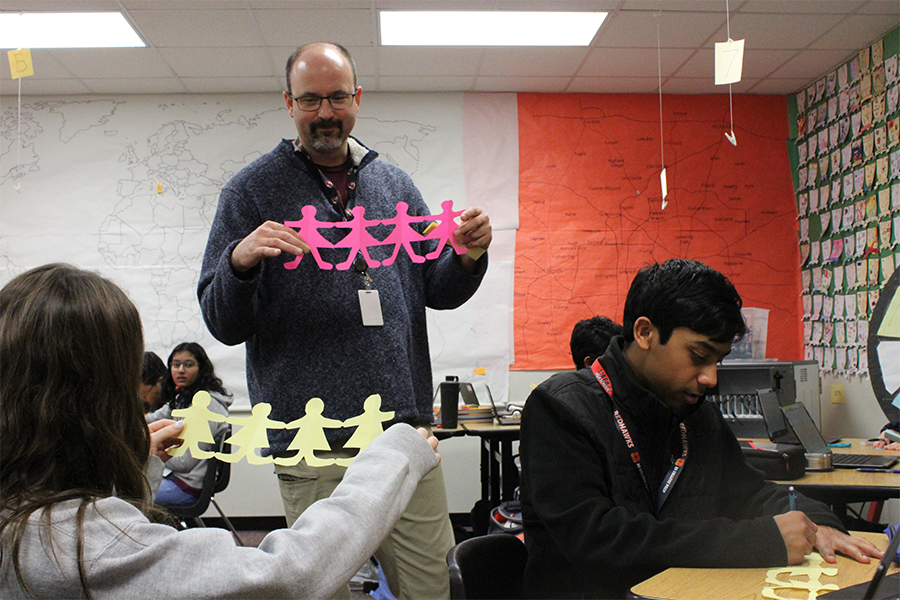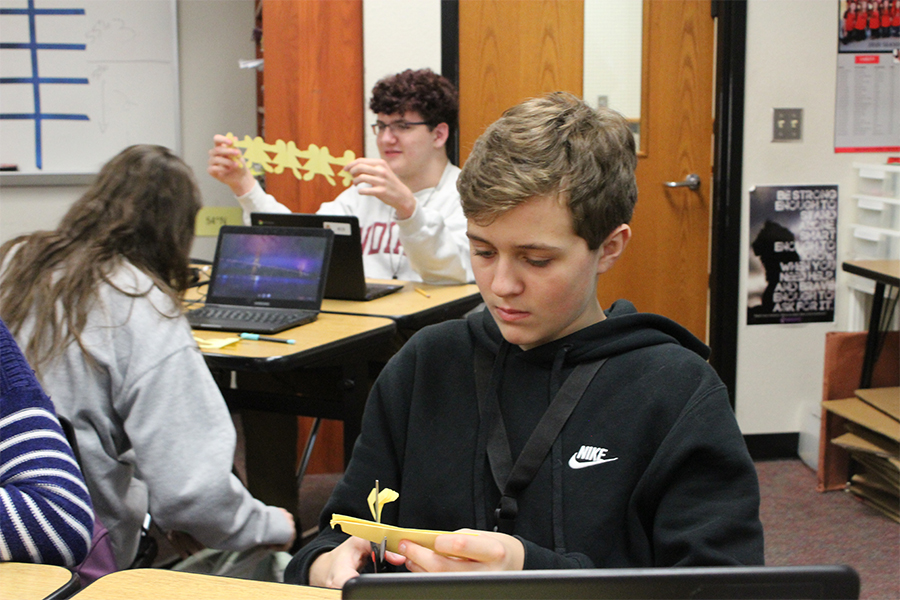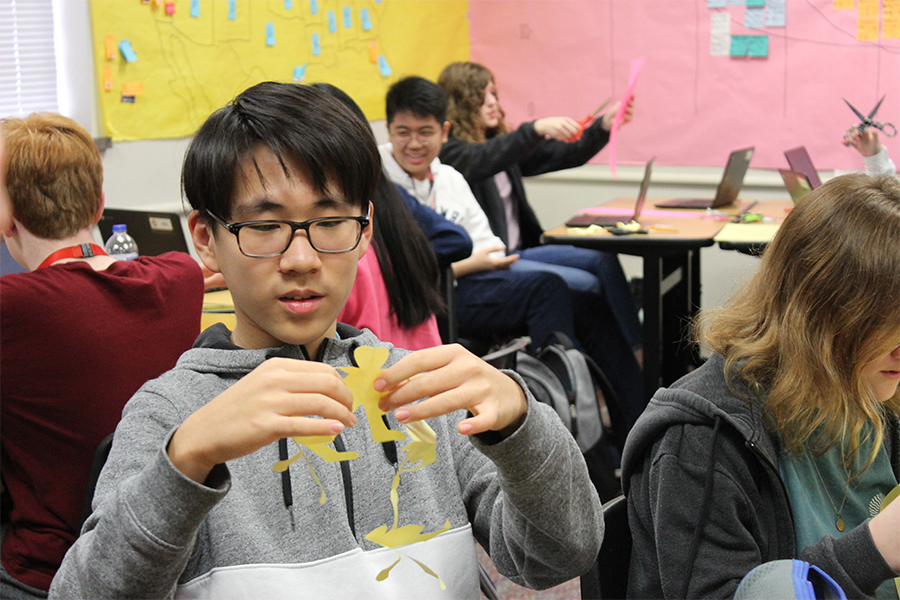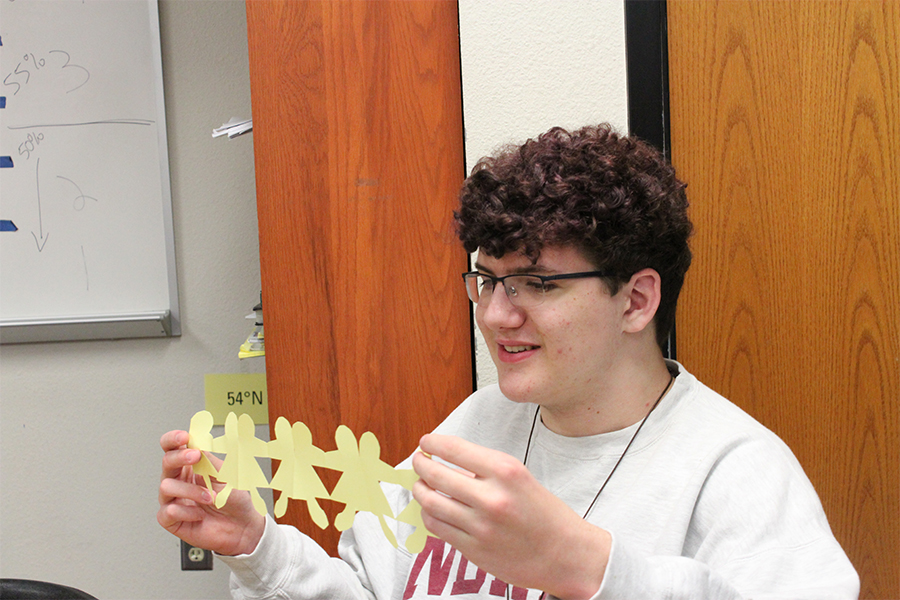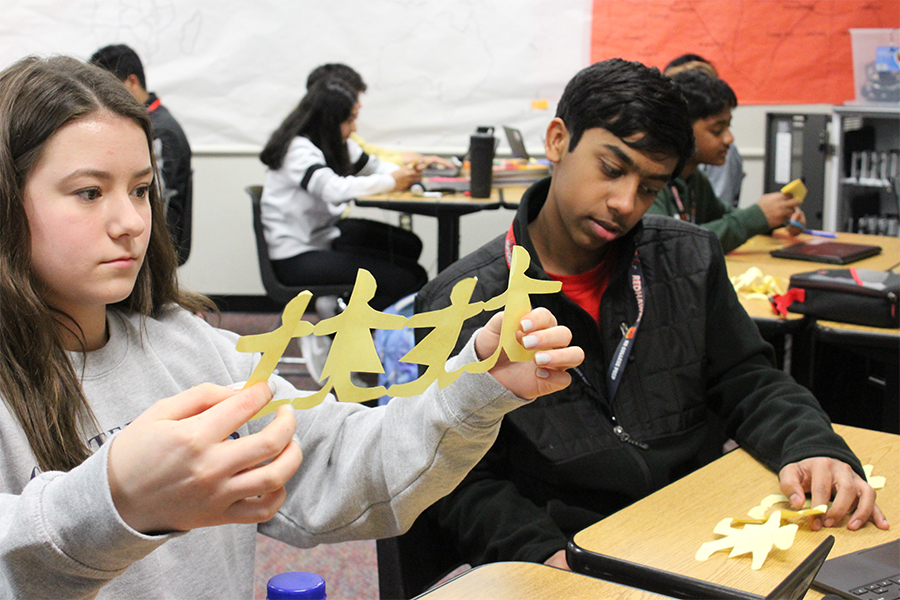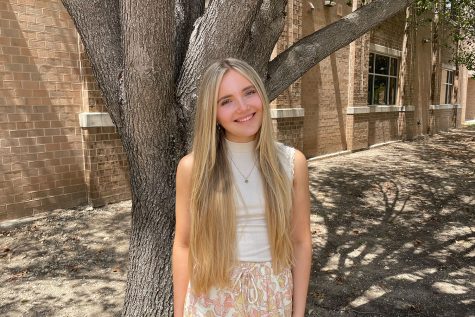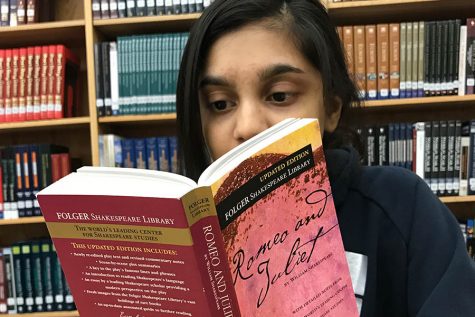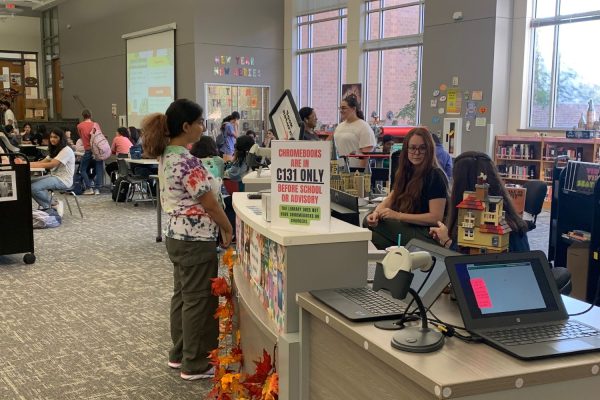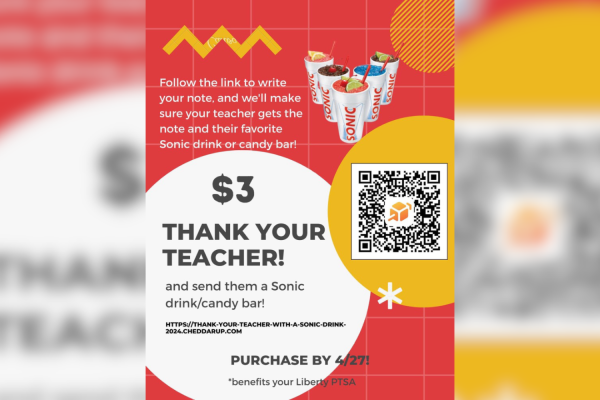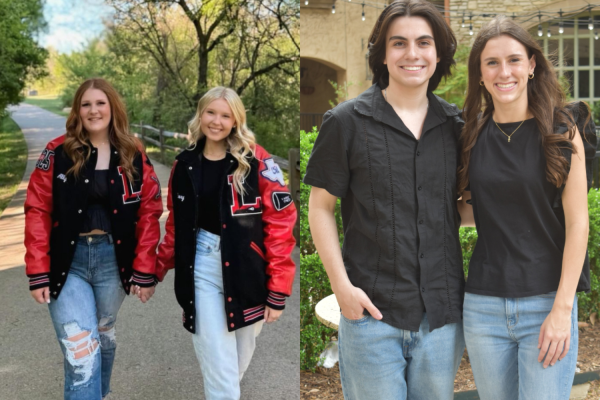Paper doll chain illustrates new concept in AP Human Geography
January 23, 2020
Beginning a new unit Wednesday and Thursday, AP Human Geography teacher Tim Johannes is having students complete a research project over gender roles in agriculture, by using more of an arts-and-crafts approach.
“Basically, we made paper doll chains and researched the roles of women in agriculture,” freshman Sarthak Dhawan said. “How through granting more resources, they would be able to make a huge impact in ending world hunger.”
The idea of doing more creative-based projects as a way of learning important concepts was appealing to freshman Harley Classe.
“It gives us a chance of doing something out of the ordinary instead of just sitting and listening to notes,” Classe said. “We actually get to apply what we’re learning and try something new. This project is important because it gives us a better understanding of how the world is changing from how it used to be compared to now, and what the main goal is.”
By creating something different via the paper doll chains, Johannes wants his students to understand the issues that many people face in today’s world.
“As each new technology shows up to certain areas, especially poorer ones, a lot of the time only men benefit from it,” Johannes said. “We’re looking at how women getting more involved with the technology would help areas around the world. When women get more involved in agriculture, they can help their families out, can send the kids to school, even more often than men in many cases. It’s an eye opener for a lot of kids because they don’t really understand that part of it. Agriculture is very foreign to people in the United States.”



